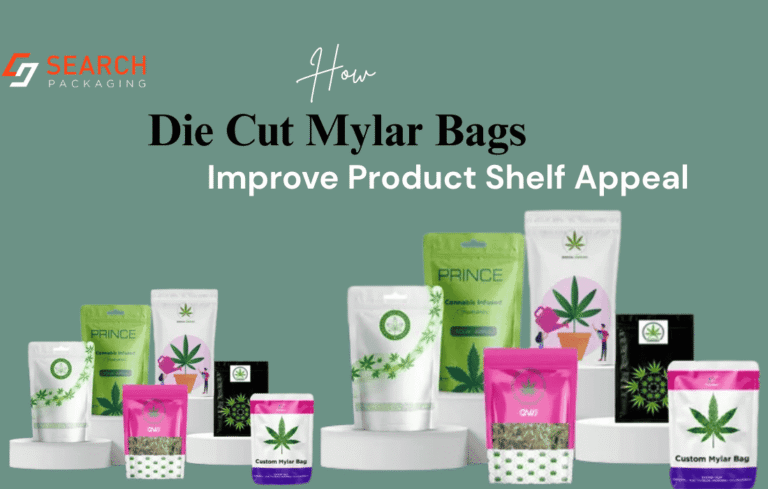Cereal boxes are simply rectangular boxes made of cardboard, but there is much more to them than one might expect. The cereal box dimensions not only matter to the manufacturers and packagers but to the customers and sellers aswell. You may wonder Why? The shelf space, shipping costs and the net weight of cereal you get is determined by the size.
Let’s take a practical example. Have you ever bought a cereal box that seemed to be full, but in fact it was mostly empty? That is a clear case of the ‘wolf in sheep’s clothing’. Knowledge of the average dimensions allow you to compare cereal brands based on their prices as well as what youre paying for.
Furthermore, it is important to note that the size of the box impacts the environment in a number of ways. More packaging means more waste. A box with only a few ounces of cereal inside occupies space in trucks and shelves and adds to the carbon footprint. In this blog, we shall be discussing the dimensions of cereal boxes in detail.
Standard Cereal Box Dimensions
The Marking of dimensions in any cereal box is usually standard hence it’s easily predicted. A standard box of cereal is 12 inches in height, 8 inches in width, and 2 inches deep. These measurements are usually same for the cereal brands like Cheerios, Lucky Charms, and Frosted Flakes. There could be slight differences though.
Let’s break that down:
- Height: 11.5 to 12 inches
- Width: 7.5 to 8.5 inches
- Depth: 1.75 to 2.25 inches
This is easily stackable and fits well on supermarket shelves and in kitchen cupboards. But remember, these measurements are of the outer cardboard box and not the inner plastic bag in which the cereal is packed. Some brands reduce the quantity of the cereal but retain the size of the box, thus giving that ‘half empty box’ look.
Variations in Cereal Box Sizes
Cereal boxes can be classified in many ways and there are varieties in any given shop and supermarket—small to large, or based on those containing the cereal inside and those to transport the product. Whether it comes in single serving sized packs or in bulk tubs, each size has its own proper place. Whether you are likely to be packing your child’s sandwich for school, preparing food for the family for a week or even preparing for a party for a large group , there is always a box of cereal to meet such a need.
Single-Serving Cereal Boxes
Single serving cereal boxes are preferred because you carry one serving at a time you want. These are the smallest of the batch and mainly built with mobility in mind. They measure around 6 inches in height, 4 inches in width and only 1 inch deep. Major brands like Kellogg’s offer these single serving boxes in a variety pack. Ideally made for a single time use. These are perfect for snacks or a quick breakfast on the go. These types of boxes are also seen in a variety pack bundled up with several other small cereal boxes.
Bulk Cereal Boxes
Whenever you are buying in a group or large store or for schools, camps or hospitals, then bulk cereal boxes would be most appropriate. These oversized boxes can be over 18 inches tall and 12 inches wide, containing multiple bags or even larger volumes of cereal inside. Similar style boxes are used by cereal brands like malt-o-meal and post especially in warehouse style packaging. They are not only an affordable solution, but suitable for the regions that consume a lot. Although not as aesthetic for shelf purposes, these boxes are made with sturdiness and budget in mind.
Family-Sized Cereal Boxes
It is these large boxes that most people are familiar with when seeing them on shelves in homes across the nation. They are intended to accommodate cereal for several days of the week without having to do a refill constantly. These boxes generally measure about 14 inches tall, 10 inches wide, and 3 inches deep, giving them the space to carry larger quantities without being awkward to store. Top brands like nestle use these boxes for their highest selling cereals. These are good for households or anyone who consume cereal daily.
How Much Does the Average Cereal Box Weigh?
Cereal is the first choice breakfast in many households because it is rich in fiber and vitamins together with its excitable different flavors. Most of the family-sized cereal boxes weigh approximately for about 18 ounces (500grams). Some brands even scale their products upwards to be slightly larger up to the 21 ounces (595 grams) since the cereal is denser like granola.
Actual weights differ with different brands and types of cereals, some of them being puffed and lighter but take a lot of space, leaving the weight lighter. So with the cross of heavy clustered cereals, it packs more weight in the space of such a size of the box. Always check the net weight given in the label for the exact measure that you are taking home.
International Shipping Size Restrictions For Cereal boxes
When creating packaging for cereals shipped worldwide, you should look at the unique shipping restrictions for FedEx, DHL and UPS. They help decide both the shipping charges and whether or not your order is eligible for shipping. Most international courier companies charge by the dimension, rather than the actual weight, of your package. When your packages are especially large, you may still be charged more, even if they don’t weigh much.
Limits on Sizes for Fast and Easy Manufacturing
FedEx International Priority®: Shipments shouldn’t be longer than 108 inches or a combined 130 inches in length and circumference. A DHL Express package usually should not exceed 47.2″ x 31.5″ x 31.5″, with dimensional weight used as well. With UPS Worldwide Expedited®, packages are not permitted to be more than 108 inches long or 165 inches in total length and circumference.
How Packaging Size Influences The Serving And Pricing
Well, here is where things start to get a little deceptive. Naturally, a bigger box should contain more than a small one. In practice, however, that is not so. Brands can simply take a serving size, change it, or substitute some puffier cereals-then volume goes up but not weight. It’s slack fill, and although it’s legal, it isn’t all that nice.
So, smaller boxes may seem cheaper at first sight, but they often cost more per ounce. That’s why smart shoppers check the unit price listed on store shelf. Understanding dimensions educates you about what your paying for.
The Proper Material for Cereal Box Packaging
Material used in the box packaging of cereals goes a long way in product protection and making a solid first impression on customers. The boxes must not be flimsy, otherwise, it will ruin the brand image. Most companies prefer durable and moisture-resistant materials for packaging. This keeps the cereal fresh longer and protects it from UV rays.
Here the list of appropriate materials for the use of cereal box making:
- Cardboard: Light, yet durable, cardboard is the preferred option for most cereal packaging. It’s great at giving protection against damage from being crushed, retains its form when stored, and is affordable to mass produce.
- Rigid Stock: Characterized by a premium touch and durability, rigid stock is heavier and protective. Less usual for standard boxes of cereal, it’s reserved for limited editions or special promotion packs that muse look special.
- Kraft Paper: A greener alternative, Kraft paper is both biodegradable and tough against tears. It will appeal to eco-aware consumers yet still provide a decent level of structural integrity.
- Corrugated Board: Produced with a fluted inner layer, this product has greater strength and cushioning. Ideal for bulk or family-sized boxes of cereal that require added strength in shipping and stacking.
Why Food-Grade Packaging Matters
Cereal freshness and safety mainly depend on food-grade materials. These materials can be non-toxic and contamination resistant, so that flavor preservation will go hand in hand with improved shelf life. For customers, this means that they can trust your product as of the first pour, and even the last drop, into their cereal bowls.
Conclusion
Insight and knowledge about cereal box dimensions is not just about numbers, it is all about value, sustainability, convenience, and quality. Starting from compact single pack sizes up to big sizes in bulk boxes, sizes exist that serve specific lifestyles and needs. The familiarity of the standard sizes and weights will prove beneficial to you in making wiser shopping choices, but it will also ensure that your dollar will get you best value for money.
Packaging is just as important. The correct material, be it rigid cardboard, quality Kraft, or food safe ones, protect your cereal from potential harm, keep it fresh, and show the brand as reliable. These details mean a lot, when we are faced with an abundance of choices. Then the next time you’re up in the cereal aisle, you’ll understand how to read beyond the label and pick a box that delivers quality and quantity.
FAQS
Which kind of material is best for making cereal box packaging?
Good materials for making cereal boxes are cardboard, kraft paper, rigid stock and corrugated board. Usually, cardboard is chosen for standard boxes, while kraft paper works great for environmentally friendly packaging. Premium and bulk boxes are reinforced in rigid and corrugated ways for more protection.
Is it possible to have cereal box sizes customized?
You can choose the size of your cereal box to match your needs, the right portion and your shipping strategy. Many suppliers provide different dimensions for packaging cereal, whether it’s for just one person, a family or a large purchase.
Are you able to recycle cereal boxes?
Cardboard and kraft cereal boxes usually can be recycled. Take out any plastic liners or non-recyclable coatings before you put the package in a recycling bin.
What size of box can I use for shipping cereal?
FedEx, UPS and DHL, being international couriers, use dimensional weight pricing. As an illustration, FedEx only allows boxes up to 108 inches long or 130 inches long and around their girths. By purchasing lightweight cereal boxes, you can keep your shipping expenses low and typically avoid surcharges.
Can I choose eco-friendly options when customizing cereal boxes?
Sustainable brands in the cereal industry often select kraft paper, recycled cardboard and soy-based inks for their packaging. They break down in a natural way and are attractive to those concerned with the environment.
Why do the boxes for different cereals not have the same size?
Cereal box sizes are designed to fit the different types of buyers in the market. Well-known brands like Kellogg’s and Nestlé tailor their sizes to match how, where and how much food is consumed by customers.



